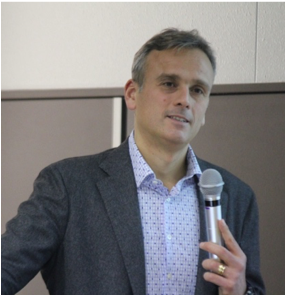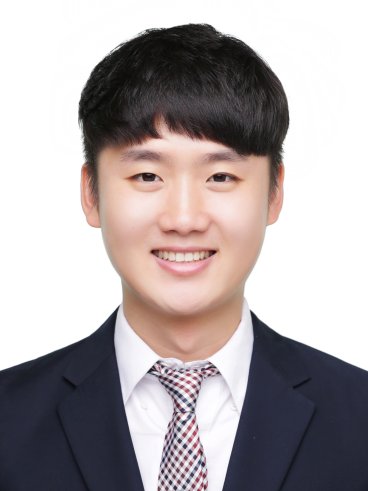Simulations of channel flow of finite-size particles with Dr. Brandt & Roger E.A. Arndt Award Ceremony
Join us on Tuesday, November 16th at 3 pm for a seminar with Dr. Luca Brandt and a celebration of this year's Roger E.A. Arndt Fellowship recipient, Jiyong Lee.
Luca Brandt, Professor in the Department of Engineering Mechanics (KTH, Sweden) and in the Department of Energy and Process Engineering (NTNU, Norway)
Abstract: The flow of particle suspensions is one of the fluid mechanics problems not yet resolved, and with a wide range of applications in industry and natural phenomena. In recent work, we have proposed the use of interface resolved numerical simulations, in parallel to experiments, to shed light on how the presence of rigid solid particles affects laminar and turbulent flows in channels and pipes. In particular, considering the simplest case of neutrally-buoyant spherical particles, simulations have enabled us to identify 3 distinct regimes in the parameter space defined by the particle volume fraction and Reynolds number: i) a laminar-like regime, dominated by viscous stresses in the liquid phase, ii) particle-laden turbulence at higher Reynolds number and moderate solid volume fraction, iii) particulate flow at higher volume fractions. In this regime particles tend to migrate towards the channel centre and turbulent fluctuations are quenched. Interestingly, the increase of drag due to the presence of the solid phase is approximately balanced by the turbulence attenuation induced by the high concentrations at the channel centerline, so that the turbulent drag is of the order of the single-phase values, as shown by experiments extending to Reynolds numbers larger than those typically achieved in simulations. More recent work investigated how the different flow regimes alter heat transfer in the suspensions. This is enhanced by the presence of the particles in the laminar regime, monotonically with the increase of the solid volume fraction. In the turbulent regime, however, the presence of the particles increases the heat transfer only at low volume fractions; further increasing the number of particles, this drops to values below the single-phase turbulent flow, which is explained by the particle migration towards the channel center, where the particles move as a compact aggregate with weak relative velocities.

About the speaker: Luca Brandt is professor in Fluid Mechanics at the Royal Institute of Technology (KTH), Stockholm, Sweden since 2012 and at the Department of Energy and Process Engineering, NTNU, Trondheim, Norway since 2021. He received a Masters in Mechanical Engineering from University of Rome, La Sapienza in 1997, and PhD in Fluid Mechanics at KTH in 2003. Before joining KTH as assistant professor he spent several months at Ecole Polytechnique, Palaiseau, France and at the University of Bologna, Italy. Luca’s research interests are in the general area of multiphase turbulence, particle laden flows, heat and mass transfer, low-Reynolds-number flows and complex fluids, hydrodynamic instabilities and flow control, with focus on the development of theoretical models and high-fidelity numerical simulations. He has more than 180 peer-reviewed journal papers including 1 Annual Review Fluid Mechanics in 2022. He was the recipient of an ERC consolidator grant to study particle suspensions in 2013 and of the "outstanding young researcher" award from the Swedish Research Council in 2014. He had been awarded the G. Gustafsson prize in 2005 and the position as outstanding researcher in Mechanics by the Swedish Research Council in 2008. Luca has served the community organizing several workshops and summer schools and is associated editor of the European Journal of Mechanics/B and of MECCANICA.
2021-2022 Roger E.A. Arndt Fellowship Recipient Jiyong Lee, Ph.D. candidate in Civil, Environmental and Geo- Engineering, advised by Michele Guala

About the recipient: Jiyong is a 3rd year Ph.D. student in the department of Civil, Environment, and Geo-Engineering, working with Professor Michele Guala. His research focuses on improving sustainability in broad categories: renewable energy technology, river restoration, and monitoring sediment budget in a river. He seeks to achieve his research goals by understanding flow dynamics, sediment transport, landscape evolution, and their complicated interactions in riverine systems. In his PhD thesis, he studies scale-dependent riverbed dynamics and its relation to bedload transport.
History of the Fellowship: After completing his PhD in Civil Engineering at MIT in 1967 and working as faculty at Penn State University for several years thereafter, Professor Roger E.A. Arndt first came to the University of Minnesota in 1977 as a professor in the Department of Civil and Mineral Engineering (now the Department of Civil, Environment, and Geo- Engineering) and the Department of Aerospace Engineering (now the Department of Aerospace Engineering and Mechanics). In the over 40 years that Professor Arndt has served the University of Minnesota, he has established himself as a giant in the field of fluid mechanics and applied research. Professor Arndt also continued building SAFL’s legacy of excellence in basic and applied research in the 16 years that he served as SAFL’s director. The Fellowship is to assist and encourage students in the field of fluid dynamics and to allow further research in this area at SAFL.
